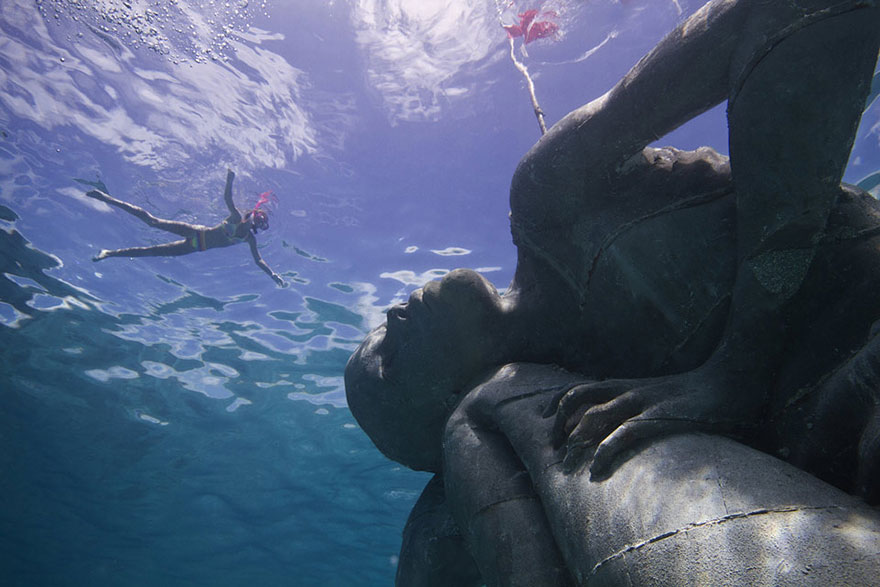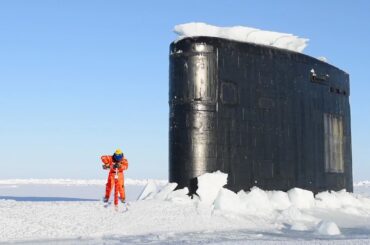Jason deCaires Taylor is a master at crafting surreal and fantastical environments, and his most recent addition to his underwater sculpture collection is no exception. Dubbed “Ocean Atlas,” this project entailed the submersion of a colossal 60-tonne statue of a young girl standing at a towering height of 18 feet into the crystal-clear waters off the coast of Nassau in the Bahamas. This latest sculpture holds the title of being the largest underwater statue globally, and it is nothing short of awe-inspiring.
The sculpture features a young girl appearing to struggle under the weight of a massive burden, fittingly named after Atlas, the legendary Greek god who bore the heavens on his shoulders. It is a striking and poignant depiction, evoking feelings of empathy and contemplation in anyone who encounters it.
Like all of Taylor’s exceptional underwater sculptures, “Ocean Atlas” was carefully crafted from a unique pH-neutral cement that promotes the thriving of reef organisms on its surface. His art pieces have consistently aided the creation of new reefs in areas where none previously existed, drawing tourists to otherwise overworked diving sites. Commissioned by the Bahamas Reef Educational Foundation to honor its founder, this statue is no exception.
In a fascinating interview with Bored Panda, deCaires-Taylor shared the story of how he began his underwater sculpture journey, a journey that has led to him creating some of the most breathtaking and thought-provoking art pieces of our time.
 “The materials I use are expected to last for hundreds of years. (they use a similar type of cement that was used to make Roman Bridges which are still in existence today). Reefs take hundreds of years to forms to its important that the materials I use are sustainable.”
“The materials I use are expected to last for hundreds of years. (they use a similar type of cement that was used to make Roman Bridges which are still in existence today). Reefs take hundreds of years to forms to its important that the materials I use are sustainable.”
“Some of smaller pieces I make become colonised and changed very rapidly, some times within months. It is one of the reasons I tend to use the figurative form and not abstract shapes, as no matter how much change occurs we can still see an element of ourselves. It is also why I scaled up the “Ocean Atlas” piece. Even with substantial growth the form will still be very apparent.”

“On some of the smaller sculptures I am able to dictate the colonisation and have included Gorgonian fan corals to symbolise wings and stag-horn coral to alter the form. I also texture certain areas to allow coral polyps to adhere better and hollow out living spaces for crustaceans.”
“In the past I have used fire coral to colour and texture the pieces. All corals are sourced/ rescued from damage by human activity or storms, none are removed from a natural setting.”
“Currently, I am working on a project to make an underwater botanical garden in the Canary Islands. It will incorporate, over 700 figures, plants and architectural features. This should keep me busy for a couple years. The planet’s Oceans are so vast, I doubt I will run out of any space soon.”







